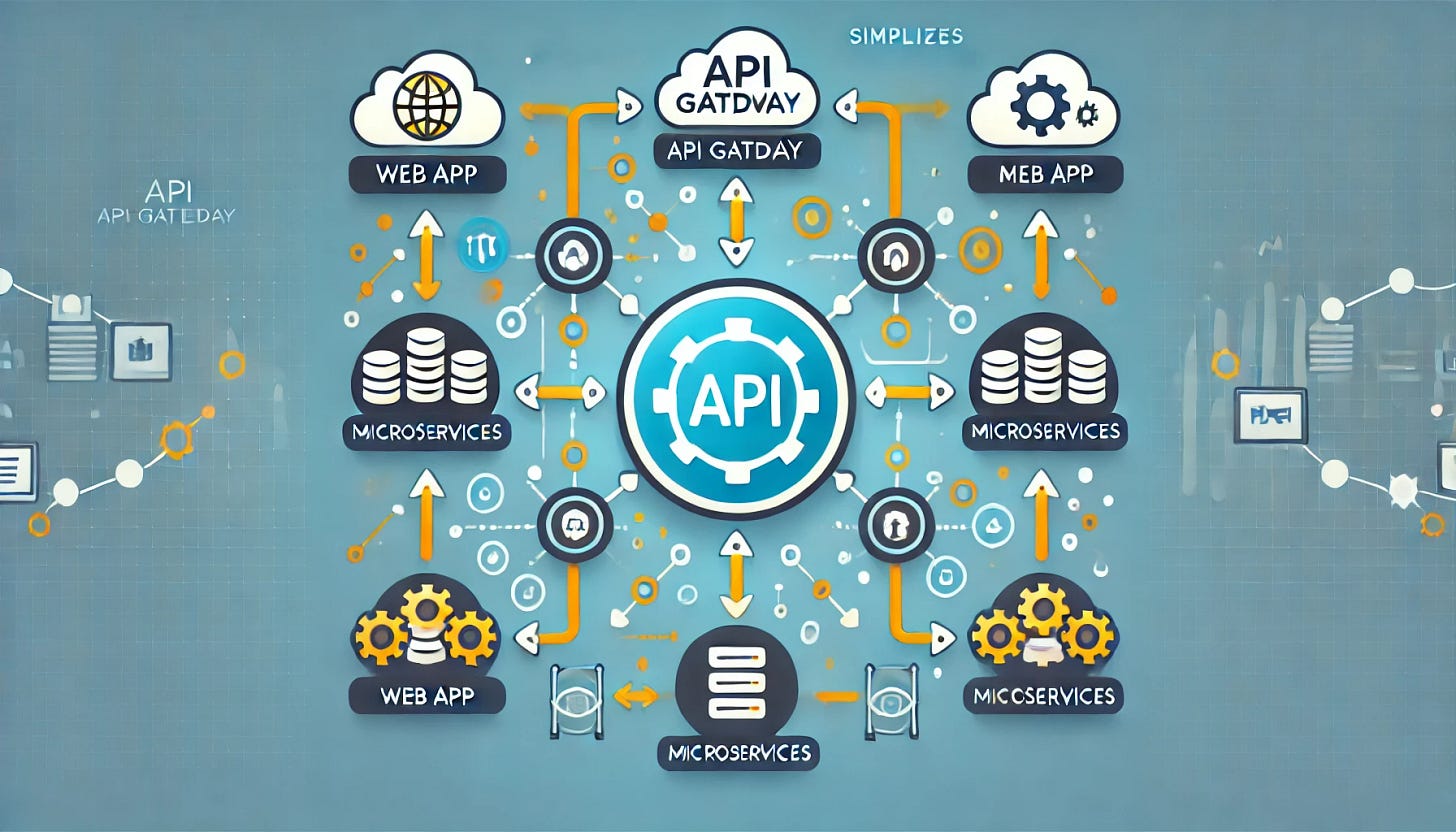How an API Gateway Clears the Path for Microservices
Simplifying Microservices Architecture with a Centralized Gateway
In the world of microservices architecture, applications are split into multiple, independent services that communicate with each other. While this approach brings scalability and maintainability, it also introduces new complexities, such as managing communication between services, handling authentication, and addressing security.
This is where an API Gateway becomes a key player, acting as the central entry point to simplify and optimize the interaction between clients and microservices. Let’s explore how an API Gateway clears the path for microservices and why it’s an essential component in modern distributed systems.
What is an API Gateway?
An API Gateway is a server that sits between clients and a collection of microservices. It acts as a reverse proxy, routing requests from clients to the appropriate microservice and handling various cross-cutting concerns.
Think of an API Gateway as the concierge of a hotel: clients interact only with the gateway, and the gateway coordinates with the necessary services behind the scenes.
Key Roles of an API Gateway
👋 Become 1% better at .NET Full Stack development every day.
👆 https://dotnet-fullstack-dev.blogspot.com/
♻ Restack it Vibe matches, help others to get it
Centralized Entry Point: Consolidates all client interactions, simplifying how requests are managed.
Routing: Directs incoming client requests to the correct microservice.
Authentication and Authorization: Ensures secure access by verifying client credentials and permissions.
Load Balancing: Distributes incoming traffic across multiple instances of a service to maintain performance.
Rate Limiting and Throttling: Protects services from being overwhelmed by limiting the number of requests.
Caching: Stores frequently requested data to reduce latency and improve performance.
Protocol Translation: Converts requests between protocols (e.g., HTTP to WebSocket or gRPC).
Challenges in Microservices Without an API Gateway
Increased Complexity for Clients:
Clients must interact with multiple microservices, which increases the complexity of request handling.
Changes in microservice endpoints require updates on the client side.
Redundant Cross-Cutting Concerns:
Each microservice must independently implement authentication, rate limiting, and logging, leading to duplication.
Difficulties in Monitoring and Security:
Monitoring and enforcing security policies across distributed services become cumbersome.
Inefficient Communication:
Clients may need to make multiple requests to different services, increasing latency and bandwidth usage.
How API Gateway Solves These Challenges
1. Simplifies Client Communication
An API Gateway abstracts the complexity of interacting with multiple microservices. Clients send requests to the gateway, which routes them to the appropriate services.
Example:
Without API Gateway: A mobile app must call multiple endpoints to fetch user profile, orders, and notifications.
With API Gateway: The app sends one request to the gateway, which aggregates data from multiple services and returns a consolidated response.
Client -> API Gateway -> Service A, Service B, Service C
2. Centralized Security
By managing authentication and authorization centrally, an API Gateway ensures that:
Microservices don’t need to handle security individually.
Consistent security policies are enforced across the system.
Example:
A gateway can integrate with OAuth2 or JWT to validate client tokens before forwarding requests to services.
3. Optimized Routing
The gateway ensures that requests are routed to the correct microservice based on the endpoint and other parameters. It can also perform service discovery to route requests dynamically.
4. Reduces Latency with Aggregation
For scenarios where clients need data from multiple services, an API Gateway can aggregate the responses, reducing the number of client requests.
Example:
Instead of making three separate requests for
user-profile,user-orders, anduser-notifications, the gateway combines them into a single response.
5. Improves Performance with Caching
The gateway can cache frequently requested data, reducing the load on microservices and improving response times.
6. Enables Versioning
API Gateway allows you to manage API versions seamlessly, ensuring backward compatibility.
Example:
Route
v1requests to legacy services andv2requests to updated ones.
7. Enhances Observability
API Gateways often include built-in monitoring and logging capabilities, making it easier to track metrics, errors, and usage patterns.
API Gateway Architecture Example
Scenario: An E-Commerce Platform
An e-commerce platform has multiple microservices:
Product Service: Handles product data.
Order Service: Manages customer orders.
Payment Service: Processes payments.
Without API Gateway:
Clients must know the endpoints of each service.
Authentication logic is repeated across all services.
Communication between services can become inconsistent.
With API Gateway:
Clients interact only with the API Gateway.
The gateway handles routing, security, and aggregation.
Each service focuses on its core functionality.
Client -> API Gateway:
/products -> Product Service
/orders -> Order Service
/payments -> Payment Service
Popular API Gateway Solutions
AWS API Gateway: A fully managed gateway for AWS-based services.
Azure API Management: Microsoft's API Gateway for Azure ecosystems.
Kong Gateway: An open-source API Gateway with rich plugin support.
NGINX: A lightweight API Gateway option with reverse proxy capabilities.
Traefik: An open-source gateway with dynamic routing.
Conclusion
An API Gateway is a critical component in a microservices architecture, simplifying client communication, enhancing security, and improving performance. By centralizing cross-cutting concerns like routing, authentication, and caching, it enables microservices to focus on their core functionality.
If you're building a microservices-based system, implementing an API Gateway is a strategic choice to manage complexity, boost scalability, and deliver a seamless experience for clients. 🚀
Happy coding! 😊


